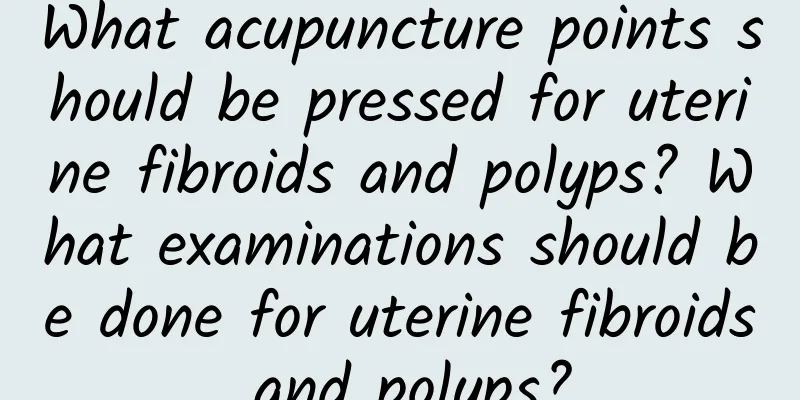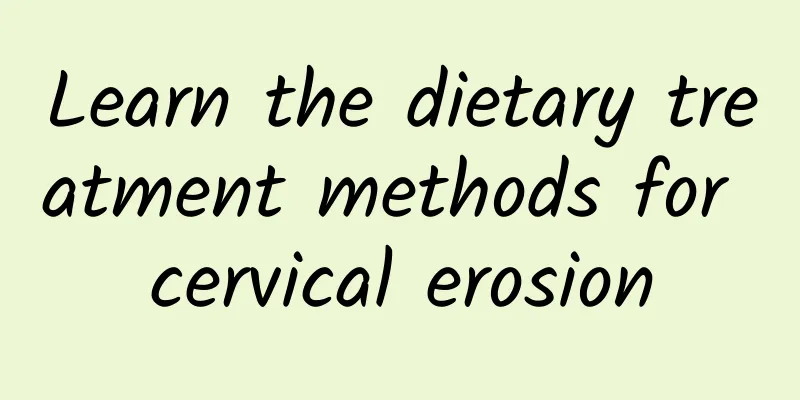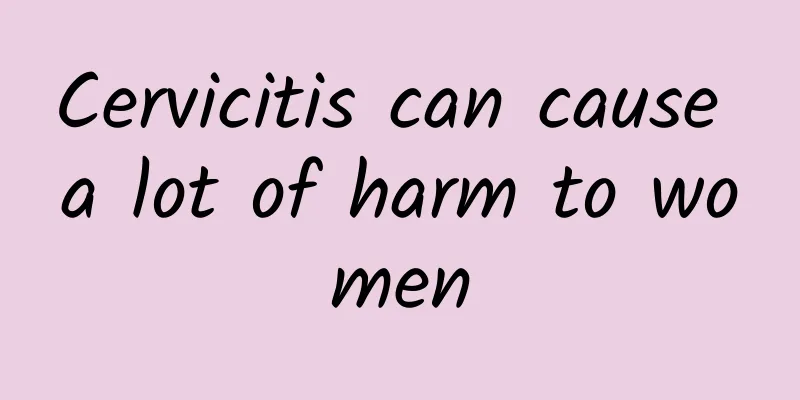What acupuncture points should be pressed for uterine fibroids and polyps? What examinations should be done for uterine fibroids and polyps?

|
Uterine fibroids and polyps are common gynecological diseases. For patients, massaging specific acupoints can provide some relief. At the same time, understanding and conducting appropriate examinations are also an important step in diagnosis and treatment. This article aims to introduce the massage acupoints and common examination methods for uterine fibroids and polyps. 1. Massage acupoints for uterine fibroids 1. Uterine superior sciatic plexus Acupoint location: on the inner side of the thigh, outside the knee pit. Massage method: Use your thumb to evenly massage the acupoints for about 3-5 minutes, 1-2 times a day. 2. Zusanli Acupoint location: On the anterior and lateral side of the lower leg, between the front edge of the tibia and the lateral edge of the fibula, 1 inch anterior and inferior to the tibia. Massage method: Use the thumb or middle finger to rotate and massage for about 5-10 minutes each time, 1-2 times a day. 3. Guanyuan Acupoint location: in the lower abdomen, 3 inches below the navel. Massage method: Use the thumb or middle finger to rotate and massage for about 5-10 minutes each time, 1-2 times a day. 2. Polyp massage points 1. Liver Meridian of Foot Taiyin Acupoint location: on the outer side of the dorsum of the foot, in the depression between the first and second metatarsal bones. Massage method: Use the thumb or middle finger to massage for about 5-10 minutes each time, 1-2 times a day. 2. Chengshan Acupoint location: on the outside of the arm, between the front edges of the ulna and radius. Massage method: Use your thumb to evenly massage the acupoints for about 3-5 minutes, 1-2 times a day. 3. Chize Acupoint location: in the depression below the radial styloid process of the forearm. Massage method: Use your thumb to evenly massage the acupoints for about 3-5 minutes, 1-2 times a day. With the correct massage points and methods, blood circulation and airflow can be promoted, pain and discomfort can be relieved, and the treatment effect can be improved. 3. Examination methods for uterine fibroids and polyps 1. Ultrasound examination Ultrasound examination is a common method to identify uterine fibroids and polyps. By scanning the uterus and appendages with ultrasound, doctors can obtain information such as the shape, size, and location of the lesions. 2. Transvaginal Ultrasound Transvaginal ultrasound is often used to examine uterine fibroids. By inserting a probe into the vagina for examination, the lesions of the uterus and adnexa can be observed more clearly. 3. Hysteroscopy Hysteroscopy is a minimally invasive surgery that can directly observe the uterine cavity and endometrium. It is of great significance for the determination of treatment plans such as the location and removal of uterine fibroids and polyps. Through correct acupoint massage and appropriate examination methods, uterine fibroids and polyps can be discovered and treated in time. At the same time, patients should also pay attention to a reasonable diet while receiving treatment to maintain physical health and balance. Especially for women, regular gynecological examinations and self-examinations are very important. Early detection of problems and timely measures can reduce the damage caused by diseases to our bodies. |
Recommend
Can pregnant women with cervical erosion give birth naturally? Pregnant women with cervical erosion must know these issues
Cervical erosion, a common gynecological disease ...
Common methods for diagnosing ectopic pregnancy
Ectopic pregnancy refers to pregnancy outside the...
The main symptoms and diagnostic criteria of congenital absence of vagina
You should know that the appearance of the sympto...
What should patients with ovarian cysts pay attention to in life
Ovarian cysts are very harmful to women's hea...
The most important preventive measures for dysmenorrhea
Dysmenorrhea is a type of gynecological disease, ...
Nutritionists share three key points for reducing body fat
"Thin" is no longer popular. What is po...
I am 43 days pregnant and have a sagging feeling in my abdomen. Is the brown substance a threatened miscarriage?
I am 43 days pregnant and have a sagging feeling ...
Introduction to three types of hazards of adnexitis that need attention
There are three types of harms of adnexitis that ...
What are the surgical methods for treating ectopic pregnancy?
Ectopic pregnancy is the most common pregnancy di...
How to get your period
How to get menstruation? Let menstruation develop...
How to take care of cervical hypertrophy
The care of cervical hypertrophy needs to be targ...
Does walking 10,000 steps a day cause bone problems? 233 Action is no longer busy
The exercise trend is popular, but white-collar w...
What should you pay attention to in your diet when you have Bartholinitis?
Bartholinitis is a disease caused by bacterial in...
Surgical treatment of cervical precancerous lesions
Can cervical precancer be treated in the late sta...
What causes pelvic inflammatory disease?
Pelvic inflammatory disease may be caused by poor...









